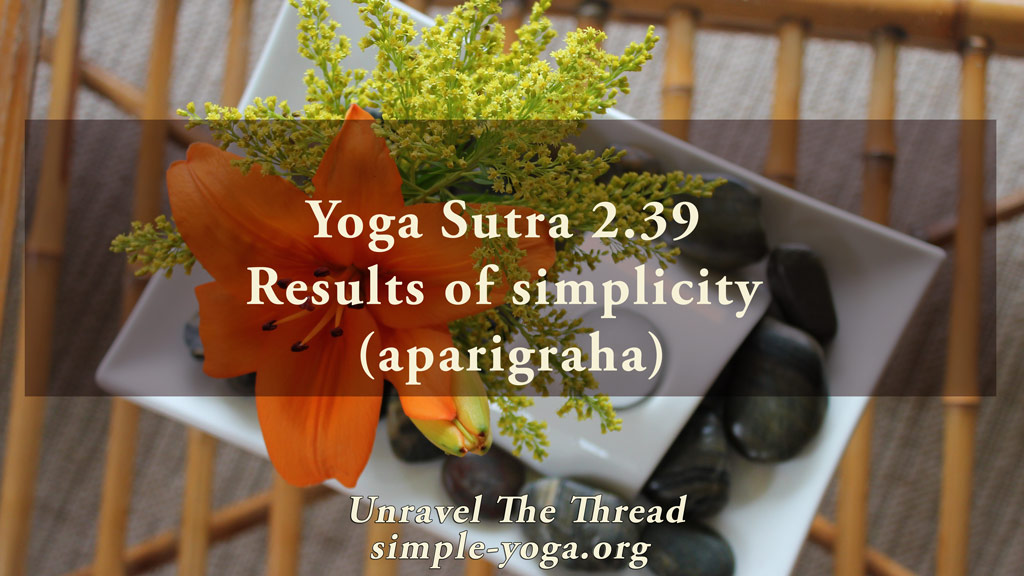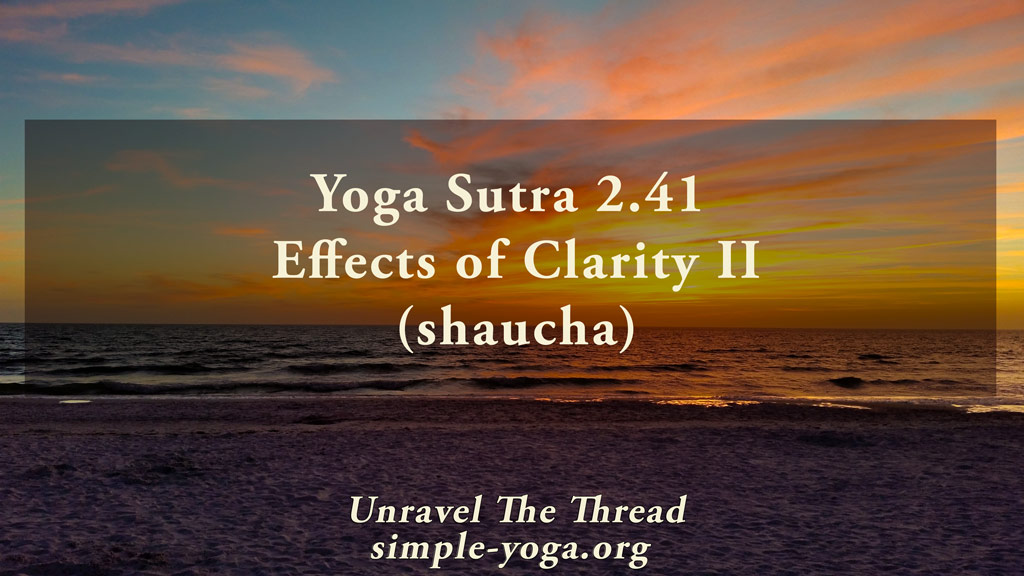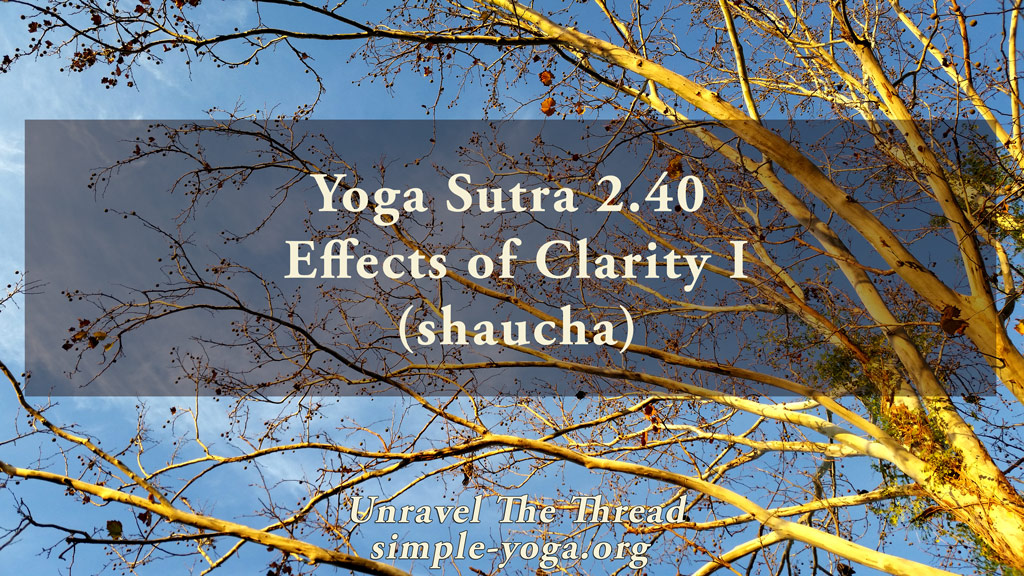
2.39 Results of freedom from cravings (aparigraha)
January 14, 2021
2.41 Effects of clarity II (shaucha)
January 25, 2021
2.39 Results of freedom from cravings (aparigraha)
January 14, 2021
2.41 Effects of clarity II (shaucha)
January 25, 20212.40 Effects of clarity I (shaucha)

2.40 Developing and refining mental, physical, and emotional clarity (shaucha), results in releasing blockages that inhibit optimal function, including habits and attitudes towards yourself and interactions with others.
By paying attention to physical, mental, and emotional processes, it becomes clear that most of us have blockages restricting the optimal flow of vital energy in body, mind and emotions. These blockages manifest as patterns of tension in the body, as unhelpful beliefs, and as unkind emotions. The first step is to become aware of these patterns, which is another way of saying know your tendencies. Then, determine if those patterns are helpful or unhelpful by asking Is this supporting my intention and purpose? Whatever is keeping you from dedicating your awareness and energy to your purpose can be released. Repeatedly bumping up against the same obstacle will eventually prompt you to make the decision to release it. Often the question that comes up is: How many times will I have to drop the obstacle? The answer is that you will keep doing what is unhelpful until the pain, discomfort, or agitation that it creates is greater than you are willing to endure. If you are attached to a belief or attitude, especially when you think that it makes you who you are, it will seem hard, maybe even impossible to release it. When the discomfort caused by the belief is unbearable, you will be put in the position of deciding between staying with a belief or attitude that causes you pain and letting go of your identification with it. The practice of gradually turning your attitude around can be useful in this process (pratipaksha bhavana in 2.33 and 2.34). Progressively, a different attitude becomes established leading you to see yourself, body, mind and emotions with greater clarity and less identification.
When you sit in silence for meditation, just to be with what is as it is, notice what distracts you from your natural clarity. The internal distractors are usually mental, physical, or emotional, or a combination of the three. Choosing to be still helps you notice where there is movement. Similarly, making the decision to be silent will make all sounds, external and internal, more evident. As you remain focused on being present, it becomes easier to notice if these internal activities are helpful or unhelpful. You become aware of patterns in the distractions as well as of your own reactivity patterns. Some of the reactivity may emerge as irritation, frustration, or annoyance. However, reactivity may also arise in the form of trying to fix or sedate the symptoms of irritation.
When you are engaged in a mindful physical activity, you can notice the portions of your movements that are smooth and effortless, which will betray the movements that are erratic and fitful. Bringing more clarity into one movement will offer insight into ways of smoothing out the irregular movements. Further questions for exploration include:
How do you cultivate clarity in your own life?
Are there areas of your mental, physical, or emotional life that you choose to ignore?
What is the nature of the blockages that you find?
Is it possible that some of those blockages result from your own beliefs?
Is there a relationship between who you think you should be and those blockages?
How do you deal with the obstacles on your path?
Do you see the obstacles as nuisances or as teachers?
What contributes to cleansing your senses?
How can you cleanse yourself mentally, physically, and emotionally?
How are you refining your present level of clarity?
In the next sutra you can see more results of practicing shaucha.
As usual, one more way of exploring the meaning of this sutra is by chanting it.
You can choose to chant it in its traditional form with some of the words coming together:
2.40 śaucāt svāṅgajugupsā parairasaṃsargaḥ
शौचात् स्वाङ्गजुगुप्सा परैरसंसर्गः ॥४०॥
Another option is to chant each word in the sutra individually:
- śaucāt
- svāṅga
- jugupsā
- paraiḥ
- asaṃsargaḥ
If you prefer, you may listen to the podcast:
Unravel the thread is now available as a book!
If you find Simple-Yoga.org and Unravel the thread useful, consider supporting my labor with a donation, you may also donate using PayPal or Venmo. Thank you!
